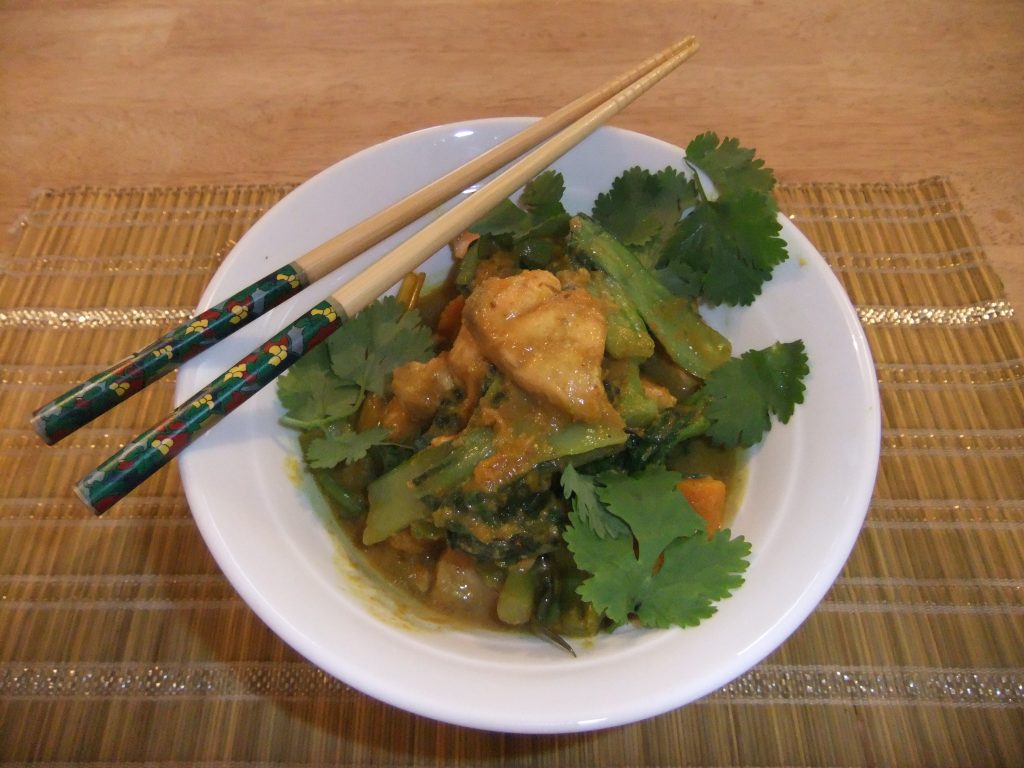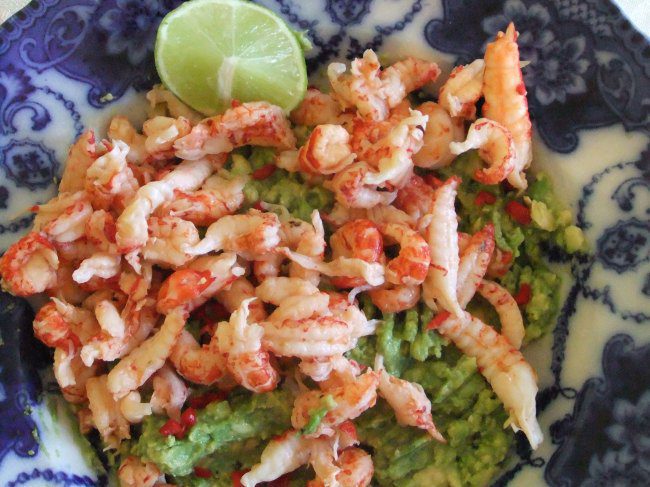
Thai yellow salmon & squash curry
We love this warming, comforting curry when the weather is grey and cold and guests always seem to love it. My husband adapted it from a recipe by Nigella to have a thicker sauce, more greens, and less starchy carbs that lead to weight gain. If you don’t like any trace of hot spices, this dish is not for you – if you like only moderate heat use just 1 tbsp Amoy or Sharwood’s curry pastes instead of the genuine (and hotter) Thai brands from Asian shops. The more unusual ingredients are all available from good supermarkets, delis, or inexpensively from Asian shops. Leftovers are safe to eat the next day if stored in the bottom (coldest shelf) of the fridge and properly reheated.
For 2:
250g pumpkin or butternut squash, peeled and cut into large bite-sized cubes
165ml tin coconut milk
165 ml fish stock, water leftover after steaming veg, or just plain water
1-2 rounded tablespoons yellow (or red) Thai curry paste
3 tbsp Asian fish sauce
3 fresh lemongrass stalks, each cut into 3 and bashed with a pestle or bruised with the back of a knife
3 lime leaves (frozen or dried), cut into narrow strips if you can be bothered
1 level teaspoon ground turmeric
Handful of fresh coriander, rinsed and roughly chopped (stalks and all is fine)
300g salmon darnes, ideally wild or organic, skinned and cut into bite-size cubes of about 2-2.5cm
A handful of shelled king prawn tails (optional)
350g (2 very large handfuls) of one of the following:
pak choi cut into 2” lengths
streamed-but-still-crisp broccoli florets or green beans
Juice of ½ -1 lime, to taste
Brown basmati rice to serve (see below for cooking instructions)
1. Pour the 165 ml tin of coconut milk, 165 ml of fish stock or water, and 1-2 tbsp of the curry paste into a heavy-bottomed saucepan. Whisk well with a fork to amalgamate, and add the fish sauce, lemongrass, lime leaves, and turmeric. Stir and bring to a boil, then add the butternut squash/pumpkin pieces. Cook on a fast simmer until the pumpkin is tender but not mushy, about 15 minutes, although different sorts of pumpkins can vary enormously in the amount of time they take to cook; some squash can take as little as 5 minutes.
2. To the robustly simmering pan, add the pak choi if using, tamping down with a spoon. Cover and cook until slightly wilted. Then add the salmon and, if using, the prawns. If you are using pre-steamed broccoli or green beans instead of pak choi, add these now. When the salmon is cooked and the pak choi (if using) is wilted, squeeze in the juice of ½ the lime, adding the juice of the remaining half if you feel it needs it.
Serve with:
1/2 mug of brown basmati rice (for 2 people), boiled in a covered saucepan with 1 mug of boiling water and ½ level teaspoon ground turmeric. Do not stir rice when it is cooking. When it’s done you should see that the rice has swelled up, absorbed all the water, and has little steam holes visible in its surface. It should stay warm in a covered saucepan for 10-15 minutes after cooking and fluff up nicely.
Variations:
Make this with 150g raw shelled prawns (frozen is fine, provided the prawns are separated from each other) and 150g salmon instead of all salmon.
Dietary note:
Coconut milk is a rich source of medium chain triglycerides which are a great source of energy for those battling fatigue or illness. Medium chain triglycerides are used to make energy directly, rather than being stored as fat. For this reason, coconut milk is a useful inclusion in any healthy diet. It is also a rich source of lauric and caprylic acids, which help clear pathogenic bacteria and yeast overgrowth from the body. Pak choi and broccoli are dark green leafy vegetables and so are rich in folic acid. Irish diets are low in folic acid which is needed for the repair and maintenance of your digestive system and for developing and maintaining brain health. Salmon is rich in omega 3 fatty acids which are anti-inflammatory and also important for the health of the digestive system, skin, brain, and more. The galangal, chili, turmeric, and other spices in curry pastes also have powerful anti-inflammatory, anti-ageing actions.

